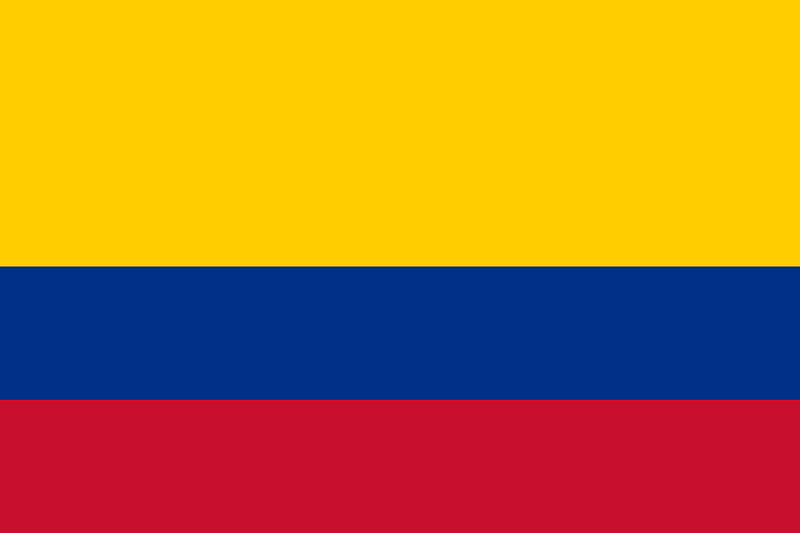This travel wiki page of Colombia will help guide travelers with quick and relevant information to consider when planning and visiting the country. It is difficult to find all the relevant information you need on culture, safety, travel restrictions, and things to do, so we summarize it all here. If anything is stale or outdated, please reach out and let us know! Let’s dive in and explore more high-level information as a Colombia trip planner.
Last updated November 8th of 2022.
Table of contents
National Information & Culture
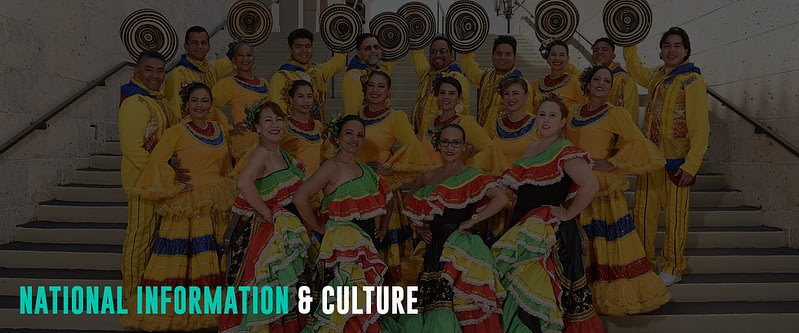
Colombia, officially the Republic of Colombia, is a country in South and North America that lies on the Equator. It shares borders with Venezuela, Brazil, Ecuador, Peru, and Panama, with the Pacific Ocean to the west and the Caribbean Sea to the North. The capital district is Bogotá, the largest city at the same time. Its official currency is the Colombian Peso (COP).
The country is one of the world’s seventeen megadiverse countries and is the second-highest level of biodiversity worldwide. Its territory encompasses the Amazon rainforest, highlands, grasslands, and deserts. In addition, Colombia is the only country in South America with coastlines and islands along the Atlantic and Pacific oceans.
Colombia’s culture reflects influences of various colonialism, Amerindian civilizations, European settlement, and enslaved Africans. They are among those that make Colombia culturally diverse.
People in Colombia are one of the most friendly and welcoming people. Hence, the country’s tourism tagline ‘The Most Welcoming Place’ is true!
Check the Official Tourism Website of the Republic of Colombia for more information, tips and hints when planning your trip.
Unique Culture and Traditions
A country with plenty of parties and festivals, Colombia enjoys up to 18 long weekends annually. Hence, no trip to Colombia is complete without experiencing one of those colorful festivals. The famous celebrations include Barranquilla Carnival, the Vallenato Legend Festival, the Cali Fair, Pasto’s Black and White Carnival, Huila’s Bambuco Pageant and Folkloric Festival, Cartagena’s Hay literary festival, and many more.
Colombian culture’s vital custom or tradition is the ‘Pot Gathering.’ It is prevalent in rural areas, where Colombian families gather for a picnic by the river or beach and share traditional Colombian dishes. It is their way to reunite family and friends to share their successes, celebrate special occasions, or have an excuse to bring everyone together.
Colombians love to dance, especially Salsa. It is common to see even 70-year-old Colombians regularly dancing some Salsa steps outside the local mini-market or plaza.
Women in Colombia are among the prettiest faces and sexiest bodies in the world. So it is no wonder Colombia always belongs to the top contenders in the Miss Universe competition worldwide.
Coffee in Colombia is world-class. It plays a huge role not just in their economy but as well as their culture. The majority of Colombians drink 3 cups of coffee per day. And those from Juan Valdez Cafe Store are a must-try, which are way better than Starbucks!
Tax Refund
All travelers can get VAT refunds on local products purchased. It includes local crafts, toys, linens, household appliances, footwear, leather goods, jewelry, emeralds, etc. Tourists only need to fill up the necessary form and bring the original passport and receipts to DIAN (National Tax and Customs Department) office located at the airport or seaport.
Special Travel Considerations
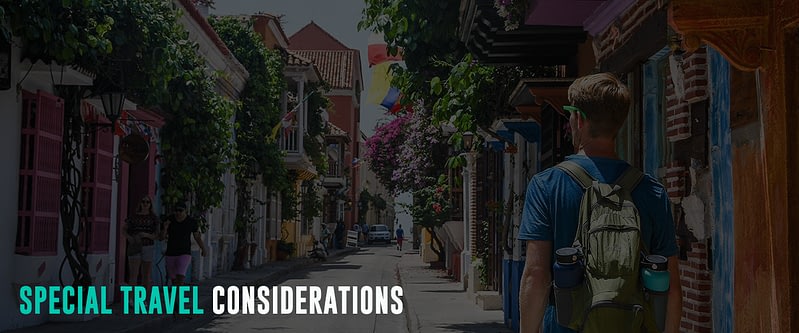
Covid-19 Protocol
As of April 29, 2022, all arriving international passengers 18 years old and above must present either a Covid-19 vaccination certificate or a negative PCR or antigen test. A Digital or printed vaccination certificate must show complete doses, and the last amount must be given at least 14 days from departure. On the other hand, the PCR testing result must be no more than 72 hours and no more than 24 hours for antigen testing.
Health and Immigration Forms
Starting October 15, 2022, travelers must also fill out the Check-Mig form from the Migration Colombia portal or app within 72 hours to 1 hour before the trip. It is Colombia’s version of the electronic immigration and health declaration form to minimize contact at the airport. The step-by-step process for filling out the Check-Mig form is available in the portal.
Travel Insurance
The purchase of travel insurance is not mandatory when traveling to Colombia. However, protecting your trip from the financial burden of untoward incidents is highly recommended. Preferably, travel insurance should cover Covid-19 infections, emergency repatriation, flight cancellations, delays, and loss of baggage.
Visa Information
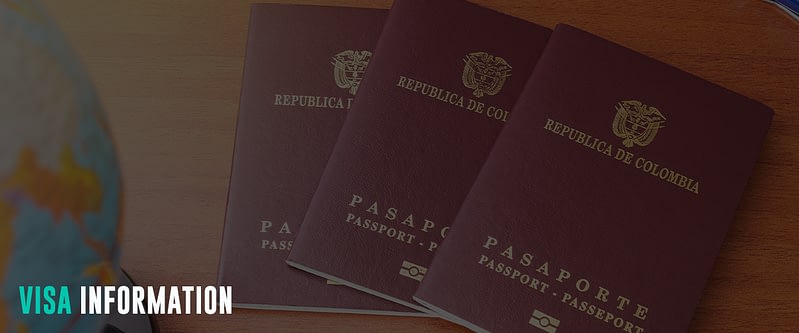
EU Nationals and citizens of 75 other countries can enter Colombia without a visa and stay within 90 days. Other nationals whose governments do not have Visa exemption for Colombia must obtain the necessary permit from the nearest Consular Office or Embassies. Check the Ministerio de Relaciones Exteriores web page to verify your documentary requirements to enter Colombia.
Travelers should also have at least six months of valid passports to enter Colombia. It includes a return or onward ticket and proof of sufficient funds for the stay.
Popular Attractions
Cartagena
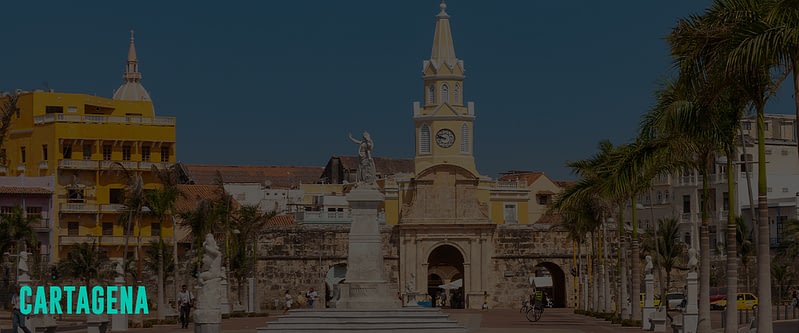
Cartagena is the capital of Bolivar on the Caribbean coast and is one of Colombia’s most popular destinations because of its rich history, colonial architecture, and stunning white-sand beaches. Famous attractions in Cartagena are the walled Old Town that dates back to the 16th century, Castillo de San Felipe de Barajas, Isla Baru, and Islas del Rosario.
Old Town
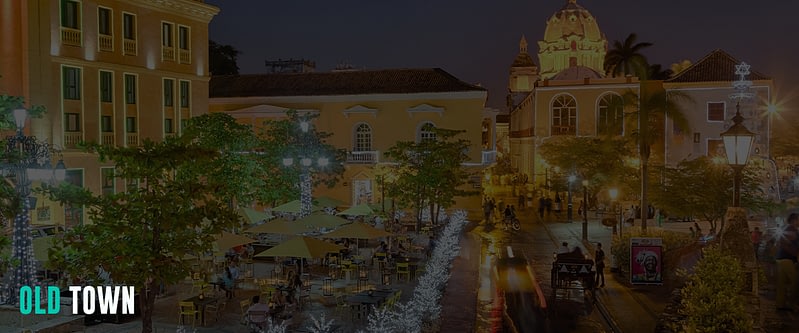
One of the most popular tourist attractions in Colombia is the historic and walled Old Town of Cartagena. The walls still stand today and were constructed to protect the Old Town from invasion and pirates. It is a UNESCO World Heritage Site and home to bursting colonial architecture as old as the 16th century. The old town, called Ciudad Amurallada, was the first Spanish settlement in Colombia. The historic districts in the old town have the best-preserved old churches, monasteries, plazas, palaces, and mansions with their famous overhanging balconies and shady patios.
Castillo de San Felipe de Barajas
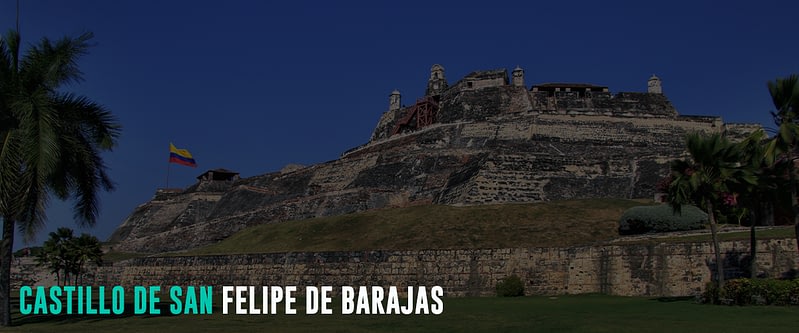
Dominating an entire section of Cartagena’s cityscape is the 16th-century Castillo de San Felipe de Barajas. It is the greatest fortress built by the Spanish in its colonies, with complex tunnel systems in strategic points for the distribution of provisions and the case of evacuation. Some of its tunnels are open to visitors, with audio and guided tours available.
Rosario Islands
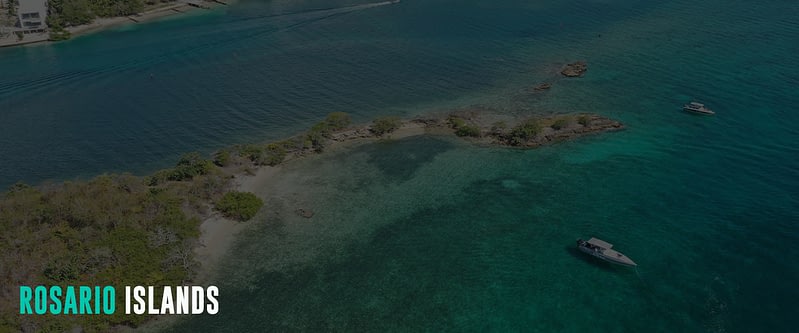
The Rosario Islands is one of 46 Natural National Parks in Colombia, with 27 primarily uninhabited Caribbean islands off the coast of Cartagena. It has rich coral reefs and marine life, making incredible snorkeling and diving experiences. The Rosario Islands, also known as Corales Islas del Rosario, is Colombia’s most visited national park. The islands are reachable by boat from Cartagena’s port and are ideal for day tours or overnight stays.
Tayrona National Natural Park
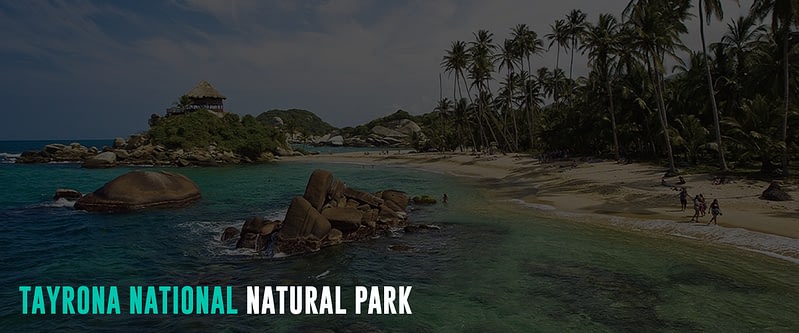
Within the jurisdiction of Santa Marta in the northern Caribbean region of Colombia is the Tayrona National Natural Park. The park also lies on the foothills of another nature reserve, the Sierra Nevada de Santa Marta. It is home to 108 species of mammals and 300 species of birds, more than 350 algae, and more than 770 plants.
Visitors will find some of the best beaches, crystal-clear lagoons, and coves in its protected area. The top spot for swimming and snorkeling is the La Piscina lagoon, where visitors can spot lobsters, fish, and rays among the seagrass, reefs, and corals. In addition, the hiking trails to/from the coast, Tayrona National Natural Park, and the Sierra Nevada of Santa Marta provide spectacular views over the Caribbean.
The Lost City
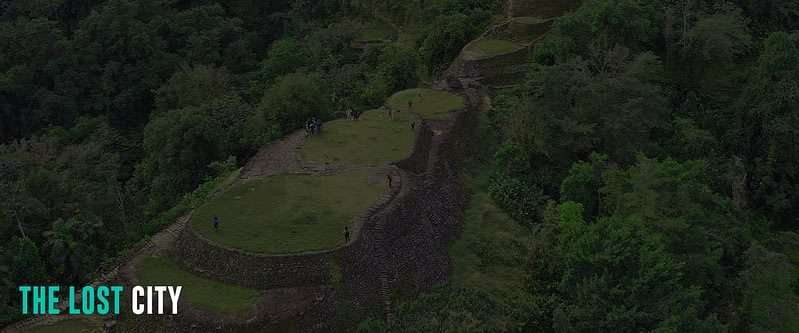
The Lost City, or Ciudad Perdida, is nearby Santa Marta and Tayrona National Park on the Caribbean coast. It is a pre-Colombian settlement by the Tayrona Indians that dates back to the 8th century but was only discovered in 1972. Today, all that remains of the ancient settlement are the stone terraces in circular shapes overgrown by the surrounding pristine jungle.
Hiking the 27-mile (44-kilometer) to the Lost City is now one of the favorite destinations for adventure seekers. It involves a four-day guided trek through the pristine rainforest, rivers, and waterfalls. Unfortunately, independent hikes are not allowed. Hence, those who want to visit must book through an approved tour operator who will provide a guide and all meals.
Salt Cathedral of Zipaquira
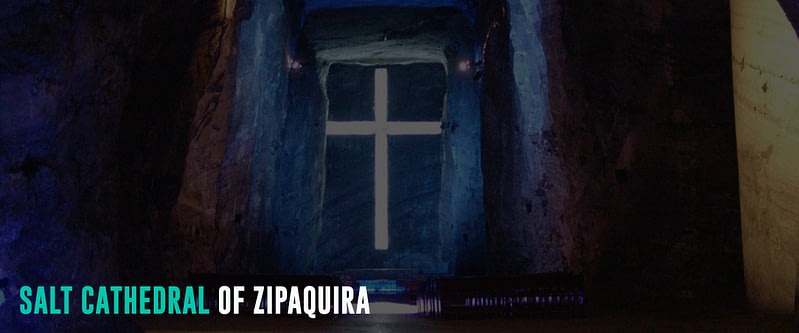
Zipaquira, the salt mining capital of Colombia, is just an hour’s drive north of Bogotá. One of the highlights of visiting Zipaquira is its Salt Cathedral, an underground (200 meters) Roman Catholic Church within the tunnels of a salt mine in a halite mountain near the city. The cathedral has unique and innovative architecture and is one of the most notable achievements of Colombian architecture. It represents a valuable cultural, environmental, and religious legacy for the people of Colombia. The cathedral also depicts the salt mine workers’ faith by praying in the church they built inside the tunnel. Today, the church still accommodates around 3,000 parishioners attending service every Sunday.
The Salt Cathedral is within the Salt Park complex, including a Brine Museum, Salt Dome, Salt an auditorium, and a square.
Bogotá
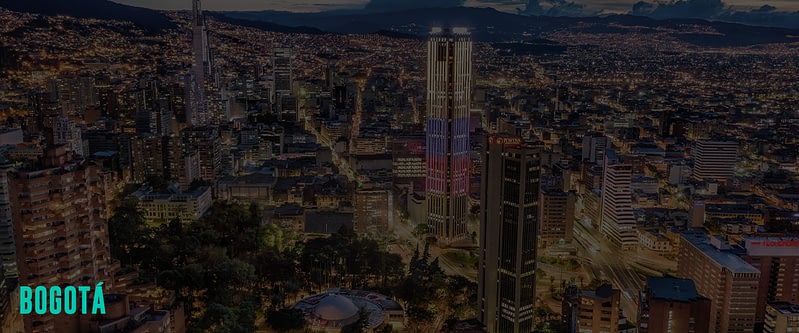
Being the capital of Colombia, Bogotá receives most of the international traffic arrival in the country. It is a high-altitude and vibrant city filled with colonial architecture.
La Candelaria
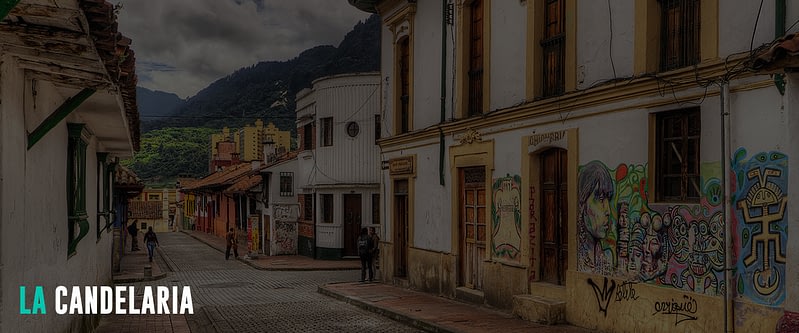
La Candelaria is A must-visit in Colombia, a historic downtown Bogotá neighborhood. It is a popular tourist destination because of its rich history, charming colonial streets, and architecture. It is home to famous museums, government palaces, old churches, and lively plazas.
The main tourist attraction in La Candelaria is Plaza Bolivar. It is in the heart of the city’s historical area, with a statue of Simon Bolivar. The old cathedral structure is the first building in the square that dates to 1539. Today’s Primary Cathedral of Bogotá (Metropolitan Cathedral Basilica of Bogotá and Primate of Colombia) was only completed in 1823. Around the Bolivar Square are the Palace of Justice, the National Capitol, the Archiepiscopal Palace with the monumental door, and the Liévano Palace.
Museo del Oro
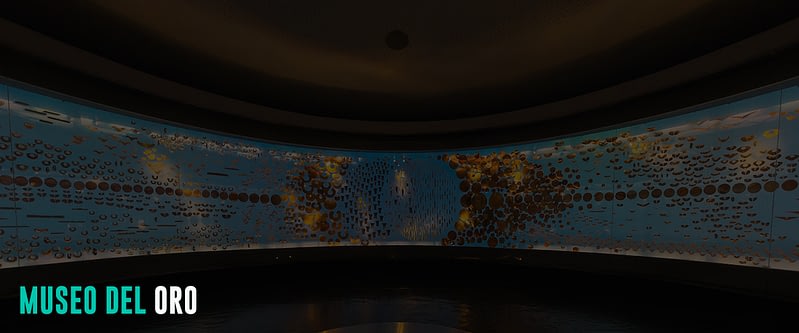
Museo del Oro, or the Gold Museum, is Bogota’s most famous museum. It contains more than 55,000 pieces of gold works and other materials from Colombia’s primary pre-Hispanic cultures. The collections are in a logical order, with descriptions in both Spanish and English.
Monserrate
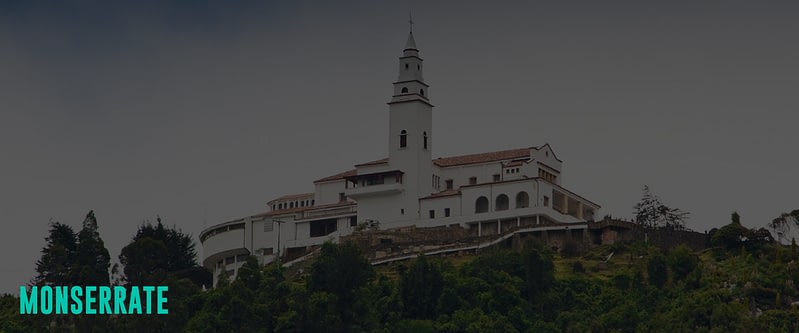
Next to Bogotá’s La Candelaria neighborhood is the 10,252 feet (3,152 meters) high mountain of Monserrate. At the top of the mountain is a 17th-century church overlooking the city, a favorite destination for pilgrims. From here, travelers can see the whole city of Bogotá, including the beautiful sunset. Riding a cable car or a funicular train is the best way to reach the top.
Medellin
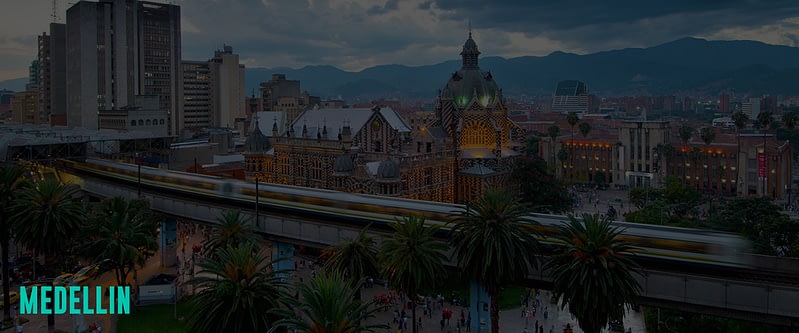
Medellín is Colombia’s second-largest city. It is famous for its flower festival, Botero Museum, and has a metropolitan feel. Medellín was the most dangerous city in the 1990s, but today, all visitors can see is innovation. The town now boasts cable cars linking the settlements in the hills to a modern metro system in the valley below. They also have ‘eco parks,’ libraries, and community centers in some of the poorest neighborhoods.
The top attractions in Medellín include the Metrocable, Parque Explora, Laguna de Guatape, Botero Plaza, and its surrounding museums.
Caño Cristales
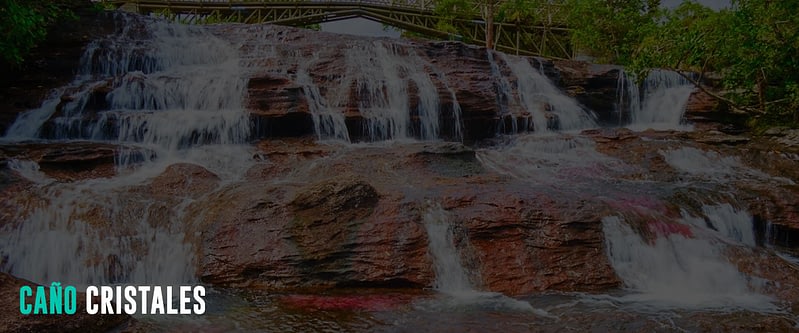
Caño Cristales, Liquid Rainbow or the River of Five Colors, is a 62-mile (100-kilometer) stretch of river in the Serranía de la Macarena National Park. The plants, rocks, sand, and algae give lovely colors to the river, creating a unique phenomenon and picturesque sight. The river is a great hiking destination for travelers, wherein they can swim and enjoy the natural pools or visit the nearby Los Cuarzos waterfalls.
Primary Spoken Language(s)
Spanish is the official language in Colombia, and almost 100 percent of the population speaks the language. English has official status in the archipelago of San Andrés, Providencia, and Santa Catalina. It is also widely used in most tourist areas. However, due to ethnic diversity in Colombia, around 71 other indigenous languages are available in the country. Most of it belongs to the Chibchan, Tucanoan, Bora–Witoto, Guajiboan, Arawakan, Cariban, Barbacoan, and Saliban language families, with two others originating from Africa and the Rom Language of the Romani people.
Safety Concerns
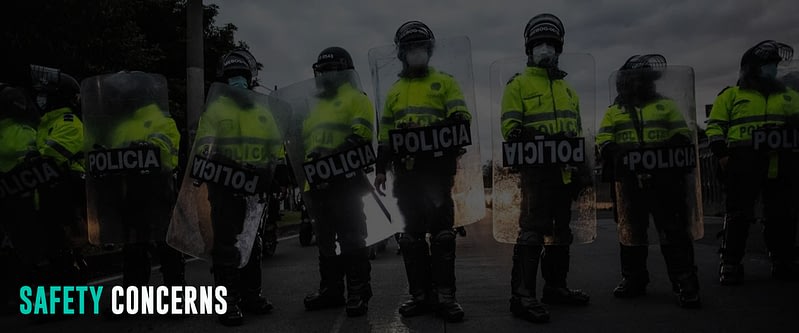
Colombia has a history of high crimes, terrorism, kidnapping, drug cartels, and civil unrest. But in recent years, traveling to Colombia has become increasingly safer for foreigners. Today, Colombia is generally safe for tourism.
The only things that concern tourists in Colombia are petty theft and robbery, especially in Bogotá. Hence, travelers must use common sense while exploring the country, just as they would in any other location. Try to blend in and avoid standing out as a tourist who is the target of criminals. Here are a few things to remember when getting around Colombia.
- Valuable items and jewelry must be left at home or in the hotel safe.
- Keep your phone and be sure not to use it in the streets unless necessary.
- Do not carry large amounts of money; be aware of your surroundings.
- Avoid taking out your wallet in public, and best to withdraw cash from an ATM in a mall than on the street.
- Do not travel alone at night.
- Watch your drinks at all times, especially in bars or clubs, as drugs can be another concern for tourists in Colombia.
- Use a ride-sharing or mobile app when calling for taxis or transfers.
- Download an offline map of the city in case you get lost.
- Learn basic Spanish.
Follow local warnings and the authorities. Avoid going to the Cauca Department and near the borders of Venezuela. Travelers might also consider their country’s travel advisory to Colombia or the US Department of State.
Yellow Fever Vaccines
It is helpful to consider general health and vaccination recommendations to safeguard your health during your stay in Colombia. The Colombia authorities will require yellow fever vaccines for travelers visiting tourist sites such as the Sierra Nevada de Santa Marta National Park, Tayrona National Park, or the various Amazon reserves. Visitors should have the yellow vaccine at least ten days before traveling to all areas where yellow fever vaccination is mandatory.
When visiting the rainforest, travelers should also consider taking anti-Malaria pills and using insect repellant and mosquito nets.
Budget Considerations
Colombia is among the countries with meager costs of living in Latin America. As a result, Colombia is becoming an excellent hub for backpackers and digital nomads alike while enjoying the sun, fantastic culture, and delectable cuisines.
Accommodation
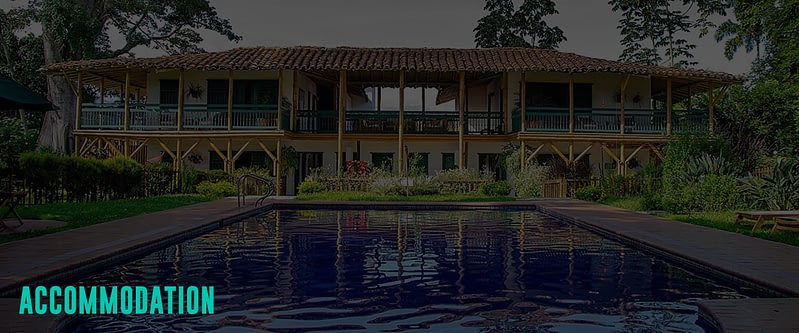
Like in any other country, the cost of accommodation in Colombia varies according to location, season, and months of travel. A dorm bed in a hostel ranges from $7-10 per night. On the other hand, a private room in a hostel and budget hotel starts at $14 and $20 in three-star hotels. Several luxury hotels are also available all over Colombia, with rates starting at $70 per night.
Airbnb’s property rentals are also prevalent in larger cities, with a private room starting at $12 per night. With the booking, travelers can get an entire apartment or house for as low as $40 per night.
Foods
Colombia’s Foods blend Caribbean, European, and indigenous traditions. Popular dishes include fried plantains, chicken soup, tamales, empanadas, meat pies, and roasted pig or piglets. The country also contains tropical fruits like bananas, avocados, lime, pineapple, and mango. They also boast of being the best coffee producers worldwide.
Delicacies like empanadas cost only $0.50, while arepas are around $0.60. The famous ceviche averages $3. Meals in a local restaurant range from $1.20-2 in the countryside and $2-3 in cities. Combo meals in fast food like Mcdonald’s range from $3-4, and expect to pay $4-6 per meal in a Western restaurant.
Hence, an average of $12 per day for meals can give travelers a full tummy in Colombia.
Transportation
Fare for city buses in Bogotá and Medellín starts at $1, regional and inter-city buses start at $6 and gradually increase according to distance. A 10-hour bus ride from Bogotá to Medellín on a premium bus costs $18.
Taxis are also widely available in Colombia, especially in the city. Expect to spend an average of $2-3 for regular short-distance travel.
Activities and Attractions
The entrance fee in a museum in Colombia averages $1, while admission to parks and nature reserves starts at $5. Scuba diving in one of its marine biodiversity averages $60, paragliding at $18, and a 4-day trek to the lost city at $277. Travelers can also join coffee tours for as low as $15.
Total Average Cost
For backpackers, expect to spend $30 daily when exploring Colombia. It includes staying in a hostel dorm bed, dining at local restaurants, taking the bus for transportation, and joining most free tours. Therefore, a two-week trip will cost budget travelers around $420 per person.
Mid-range and average travelers usually spend $60 per day. It means sleeping in at least a three-star hotel and dining in local and Western restaurants. From this budget, a traveler can also take a combination of taxi and bus as their mode of transportation. In addition, they can also take some paid tours and activities. Hence, a total of $840 for a two weeks budget.
Luxury vacationers’ daily expenses can start at $120, with unlimited possible daily expenditures. With this budget, they stay in a five-star hotel, enjoys fine dining, and take private transfers and car rentals. They can also afford to take domestic flights instead of the long journey by bus and join all the tours and activities they want. Thus, expect to spend at least $1680 in two weeks.
Customs And Import Restrictions
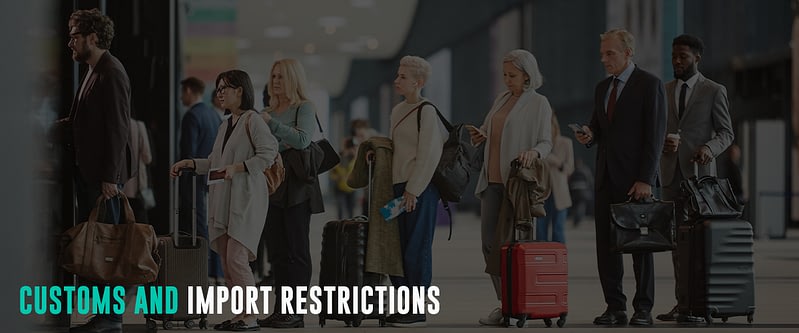
In addition to personal effects, visitors can bring money and goods into Colombia. Travelers entering the country will have the right to bring tax-free goods for a maximum of $2,000 or equivalent. They can also bring maximum cash of $10,000 or its equivalent.
Customs law in Colombia strictly prohibits entry and importation of some items. It includes the following:
- War toys.
- Firearms and ammunition, except those intended for the Public Force to fulfill its constitutional and legal mission, as well as their manufacture and sale in state-owned companies.
- Chemical, biological and nuclear weapons.
- Nuclear waste and toxic waste.
- Goods prohibited by international agreements to which Colombia has adhered or adheres.
- Equipment and products for producing or operating substances that deplete the ozone layer, as listed in Groups I and II of Annex A and groups 1, 11, and 111 of Annex B of the Montreal Protocol.
- Refrigerators, freezers, and refrigerator-freezer combinations for domestic use contain or require Hydrochlorofluorocarbons (HCFC) substances for their production or operation, as listed in Annex C of the Montreal Protocol.
- Used biomedical equipment of risk as per llb and 111.
- Unfamiliar/foreign species declared invasive (there are some varieties of fish).
- Some pesticides are for agricultural, domestic, or veterinary use.
Visit the Directorate of National Taxes and Customs web page for the complete import restrictions of Colombia.
Climate Considerations

Colombia is located on the Equator, which means the sun rises and sets simultaneously all year round. Therefore, there are just the dry seasons from December – January and July – August, and the rainy seasons from April – May, and October – November. However, the topographical diversity of Colombia provides a massive variety of landscapes, biodiversity, and thermal floors.
The Pacific side of Colombia, San Andres island, the Caribbean coast, and the Tayrona National Natural Park have warm climates. Temperatures are above 24 °C. Hence, wearing sunscreen is highly recommended.
The tropical rainforests of the Amazon have hot and humid weather, with temperatures above 27 °C. La Guajira and the steppe areas have high temperatures, scarce rainfall, and sparse vegetation.
Medellín and Cali’s regions have temperate climates between 17 °C and 24 °C. Hence, the region’s weather is ideal for agriculture and is home to various species of flora. On the other hand, Bogotá and the surrounding areas have cold climates, with temperatures between 12 °C and 17 °C. In the moorlands of Colombia, such as Chingaza National Natural Park, temperatures range between 6 °C and 12 °C.
Colombia also has glacier regions, where temperatures hover below 6 °C. In addition, it includes the Sierra Nevada de Santa Marta mountain range, a perfect destination for trekking.
Primary Transportation Options
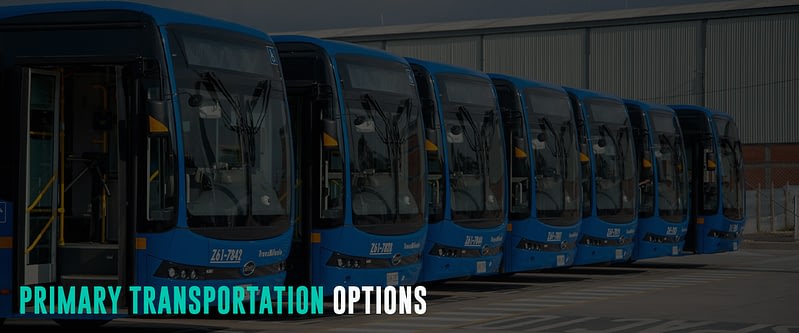
The geographical location of Colombia allows travelers to reach it by land, sea, and air. In addition, ports, airports, and terminals are in strategic locations, giving convenience to travelers.
Traveling By Air
The main gateway for international flights to Colombia is the El Dorado International Airport in Bogotá. José María Córdova International Airport and Rafael Núñez International Airport follows, along with ten others that cater international flight. In addition, Colombia has more than a hundred other airports serving domestic flights to major cities and islands.
Several airlines, including Avianca, Lan, Viva Colombia, and others, serve the country’s air traffic. The competition makes the airline fares affordable, bringing visitors to their destination in less time. Some flights are only slightly higher than traveling by land (bus).
Traveling By Sea
Some areas along the Caribbean and Pacific coasts are best traveled by boat for a faster and more scenic trip. For example, traveling by boat is the only way to reach the beautiful Rosario Islands from Cartagena. At the same time, renting speedboats is the only way to go to some of the most picturesque parts of Parque Nacional Natural Tayrona.
Boats can be arranged at the town’s harbor nearest to the destination you wish to reach. However, visitors usually have to wait until the boat has enough passengers to make the voyage worthwhile before they depart.
Traveling By Land
Bus
Buses are the primary mode of transport in Colombia. Most towns have a central bus station and terminals from which large public buses depart for destinations across the country.
Bus fares are affordable but can take most of a visitor’s travel time. For example, the 10-hour bus ride from Bogotá to Medellín costs $18. Traveling by bus on a long journey can help backpackers to save on accommodation costs.
For a comfortable journey, consider booking with one of the more expensive bus companies, such as Expreso Bolivariano and Flota Occidental, rather than relying on cheaper operators. They offer premium services such as more legroom, toilets, Wi-Fi, and non-stop travel. Lastly, their schedules are more reliable and get you to your destination on time.
Buses are also the primary mode of transportation in larger cities such as Bogotá, Cali, and Medellín. To pay, passengers need a rechargeable card specific to that city, which can be purchased at stations.
Bogotá has the TransMilenio bus network that serves the city using dedicated bus lanes, and Calí has the Masivo Integrado de Occidente or (Mio). In Medellin, Metro is the city’s pride and joy and efficiently joins up with the Metroplús bus network.
Taxis
Taxis are widely available in Colombia. Yellow cabs in the cities have meters, but decoding the fare can be challenging. Most taxis are in small towns, and rural areas do not have meters. Agreeing on the fare before you get in is the standard practice.
Anyone can hail yellow cabs on the street. However, it is best to use an app to book your transfers to ensure your safety and convenience. Also, it is best to go to a taxi stand on the road rather than flagging down a moving cab. It is also best to take a photo of the taxi registration plate and forward it before you arrive.
Car Hire
Hiring a car for several day/s is also possible in the major cities of Colombia. The rate starts at $25 per day and varies with places, car models, and how long you need the vehicle.
For example, the average rate for one day in Medellín costs $28, compared to $51 for a two-day rental. While in Bogotá, hiring a car for a day costs $33 and only $51 for two days of use.
Colectivos and Chivas
Buseta or Colectivo is in the form of a shared minivan or taxi. It is ideal for shorter trips between cities and towns, faster than the larger buses. They often serve communities beyond the reach of other modes of transport. The only downside is the max passengers squeeze in alongside luggage and potentially even livestock and don’t leave until complete.
The colorful and rustic Chivas are still common in rural areas, particularly those in the coffee region. Chivas are small 4WD vehicles with inside and roof seating and some clinging on the back.
Traveling by Colectivos or Chivas can be an exciting and fantastic experience for adventurous visitors!
Bicycle
Colombia is one of Latin America’s cycling hotspots, with bicycle shop rentals nationwide. In addition, Bogotá has a weekly Ciclovía event every Sunday, where the city closes 120 km (75 miles) of its road to vehicles from 7 AM to 2 PM and hands it to cyclists, runners, and walkers. Tourists can also hit the streets and join them.
Start Trip Planning
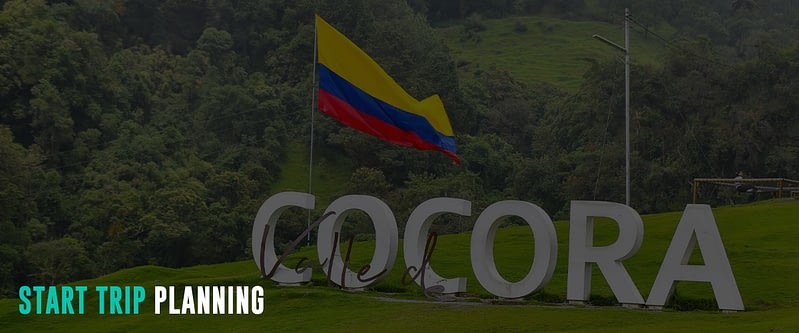
Travel-Wise is made from the ground up to help people travel more, break down the barriers that make it tough to get going, and start your journey as painlessly as possible. Bookmark our other Country Guides to help kick-start your research for future travels. We also offer templated itineraries from our staff and community that help serve as a building block for your trip plans. Alternatively, we also utilize AI to offer a way to generate itinerary ideas. This saves much time just getting you up and running with a template. From there, you can use the trip planner to create your customized itinerary, invite friends and family for collaboration, find others from Travel-Wise to join the trip, book and track important information, journal, and share your experiences at the end or along the way!

